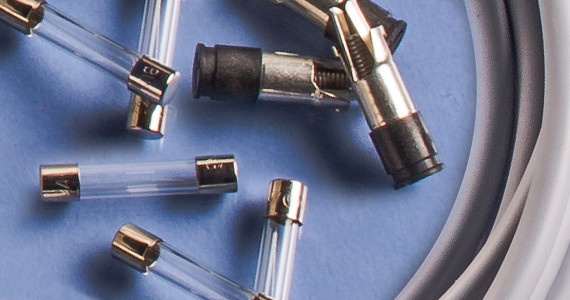Design Strategies with Fuses
Posted on 4/9/18 2:00 PM

When designing a new electrical or electronic equipment product, an important factor to determine is circuit protection. The main function is to provide protection to both the equipment and the equipment operator in the event of a circuit overload.
“The primary reason for circuit protection is to protect the end user from harm in the event of a fault condition,” explained Dan Ford, Technical Support Specialist at Interpower. “Circuit protection also serves as protection for the equipment itself, especially in products that are highly sensitive and prone to damage by overcurrent fault conditions.” Simply defined, a fault condition is a failure which causes a piece of equipment to draw too much current into the system. This can cause breakdowns, system failures, and possible injury to the equipment user.
Circuit protection usually comes in one of two forms: a circuit breaker or a fuse. A circuit breaker is an automatic switch that prohibits the flow of electric current when it is rapidly overloaded or unusually stressed. A fuse is a safety device that protects an electric circuit from excessive current.
If choosing to include a fuse as the circuit protection in the design, there are various aspects to consider. Among them are fuse size, equipment market, and a variety of design strategies.
Fuse Size and the Equipment Market
There are two standard sizes of fuses used throughout the world: 5 x 20 mm (used worldwide) and ¼ x 1¼ʺ (typically used only in North America). “Where the equipment will be marketed plays an important role in which fuse size should be selected for use. If the equipment will only be marketed in North America, the designer may wish to use the common ¼ x 1¼ʺ fuse, since this size may be more familiar to the customer base,” Dan said. “Products made strictly for markets in Europe, Asia, Australia, etc. need to utilize the 5 x 20mm fuse, as this is the only fuse size users will be able to obtain easily.”
If the equipment will be marketed to both North America and other worldwide markets, then the 5 x 20mm fuse is recommended. This will allow the manufacturer to carry one module or fuse holder/carrier combination and stock a 5 x 20mm fuse. While less common, the 5 x 20mm fuse can be used in North America. This strategy of using a common fuse size when marketing globally will help keep components costs and overhead down.
Design Strategies
The variety of factors dictates that a wide range of fuse sizes and types are available to handle circuit protection, as well as different styles of fuse holders for incorporating the fuse into a circuit. Design considerations should take into account both the fuse and fuse holder together to ensure a suitable pairing is selected. These include:
- What size fuses would be most appropriate?
- What are the load ratings for where the product is being used?
- Does the equipment have a large in-rush at start-up?
- How long can the equipment handle an overload?
- Is the overload large enough to physically destroy the fuse?
- Thermal considerations:
- Power dissipation of the fuse link
- Ratings of the fuse holder
- Ambient temperatures inside and outside equipment
- Electrical load changes
- Long operation times
- Ventilation, cooling, and heat dissipation
- Wire lengths and sizes
Additional Resources
For more information, see Fuses and Fuse Holders and the Featured Product page on Interpower’s website.
Interpower offers free technical support. For further assistance, see Interpower’s contact information below.
Topics: circuit protection, fuses, product design




